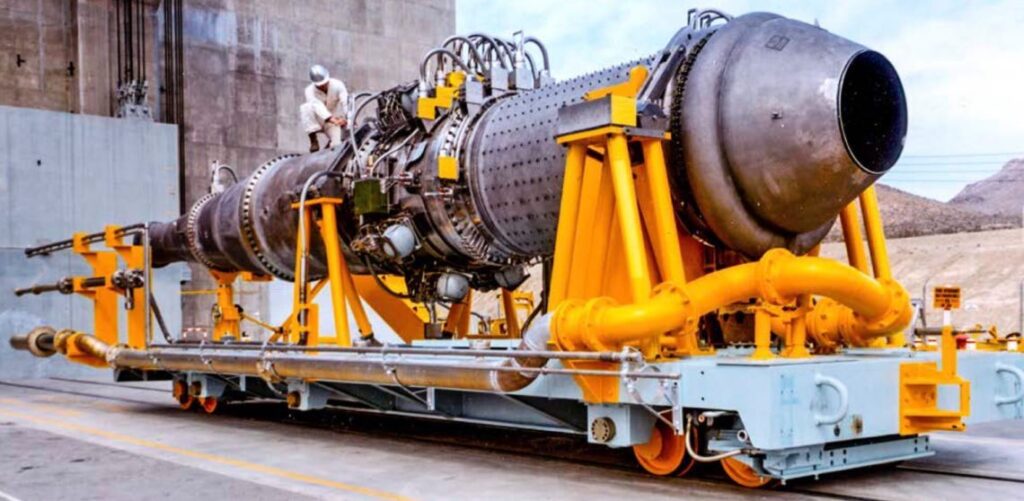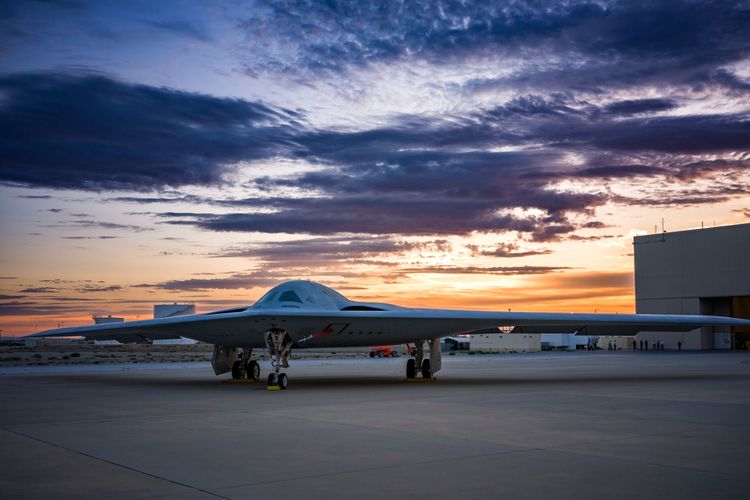F-22 Raptor will become the first American jet to fly alongside drone wingmen
- By Alex Hollings
Share This Article

The F-22 Raptor will be the first American fighter to be equipped with the necessary hardware to fly and fight alongside AI-enabled drone wingmen.
In a new report to Congress produced by the U.S. Air Force, the F-22, and not the more technologically advanced F-35, is listed as the “threshold platform” for integration with the Air Force’s Collaborative Combat Aircraft, or CCAs – which is what the branch calls the drone fighters it currently has in testing: Anduril’s YFQ-44 and General Atomics YFQ-42.
This is a very sensible decision by the Air Force. The F-22 Raptor is right at the start of a massive $11 billion upgrade program that is meant to future-proof its air dominance, making this the perfect time to start including the new hardware required for managing a drone constellation.
The first increment of CCA drones is being designed and built with a specific focus on air-to-air combat – which is not only the F-22’s bread and butter, but it’s also the focus of its replacement fighter, Boeing’s F-47. That means lessons learned from integrating fighter drones into the Raptor’s air superiority mission, whether technical or tactical, can be directly translated into the next generation of air superiority fighters as it takes shape.
As Sandboxx News has covered in the past, this forthcoming Raptor upgrade includes the long-awaited addition of infrared-search and track targeting capabilities, in the form of stealthy pods added underwing, which will allow the fighter to target enemy aircraft via their heat signatures alone. It will also incorporate helmet-cued targeting – another capability that’s become standard in other American fighters, but that wasn’t possible in the F-22 before due to space restrictions under its canopy. Stealthy new underwing drop tanks, known as low drag tanks and pylons, are also being added to provide the Raptor with a significant boost in range while not compromising much of its stealth profile. Further, new weapon systems, like the AIM-260 Joint Advanced Tactical Missile, a beyond visual range radar-guided air-to-air weapon, are also being integrated.
But the lesser-known portion of this upgrade effort has to do with the fighter’s onboard computing capabilities. The F-22 will be adopting an open system software architecture meant to allow for the rapid adoption of other emerging technologies, regardless of their manufacturer; a substantial overhaul of the fighter’s hardened digital communications suite will also take place.
These changes will make it much easier to integrate the human-machine interface (HMI) equipment pilots will use to control their drone wingmen – which right now, seems likely to be a tablet worn on the knee or mounted on a panel – as well as the high-throughput jam-resistant datalinks the jet will use to transmit commands to its drones or to receive target data, videos feeds, and more.
Currently, only the F-22 has been financially greenlit for incorporation of drone wingmen. However, the Air Force has been clear that the Raptor is just the beginning. The hardware necessary to manage drone wingmen is already slated to be a part of the F-35’s delayed Block 4 upgrade. The Air Force has also expressed interest in adding the capability to F-15E Strike Eagles and newer F-15EXs, both of which come with a backseat that could allow a weapons systems officer to focus on drone management, while the pilot focuses on flying the plane.
Feature Image: F-22 Raptors fly in formation. (U.S. Air Force photo)
Read more from Sandboxx News
- Mark 9 SDV: The SEALs’ mini-sub that packed full-sized torpedoes
- How Charles Lindbergh helped American pilots fight the Japanese in WWII
- FN’s MTL-30 wins the Army’s Precision Grenadier contest for a next-gen grenade launcher
- Can older candidates make it through special operations selection?
- Russia announces successful test of nuclear-powered cruise missile – but don’t believe that just yet
Related Posts
Sandboxx News Merch
-

‘AirPower’ Classic Hoodie
$46.00 – $48.00Price range: $46.00 through $48.00 Select options This product has multiple variants. The options may be chosen on the product page -

‘Sandboxx News’ Trucker Cap
$27.00 Select options This product has multiple variants. The options may be chosen on the product page -

‘Kinetic Diplomacy’ Bumper Sticker (Black)
$8.00 Add to cart

Alex Hollings
Alex Hollings is a writer, dad, and Marine veteran.
Related to: Airpower

Having the worst Thanksgiving Day ever while trying to evade enemy forces in special operations school

The A-12 Avenger II would’ve been America’s first real ‘stealth fighter’

Project Pluto: The most insane missile America ever built

B-21 may be the first bomber in history with an AI copilot
Sandboxx News
-

‘Sandboxx News’ Trucker Cap
$27.00 Select options This product has multiple variants. The options may be chosen on the product page -

‘AirPower’ Classic Hoodie
$46.00 – $48.00Price range: $46.00 through $48.00 Select options This product has multiple variants. The options may be chosen on the product page -

‘AirPower’ Golf Rope Hat
$31.00 Select options This product has multiple variants. The options may be chosen on the product page -

‘Sandboxx News’ Dad Hat
$27.00 Select options This product has multiple variants. The options may be chosen on the product page

